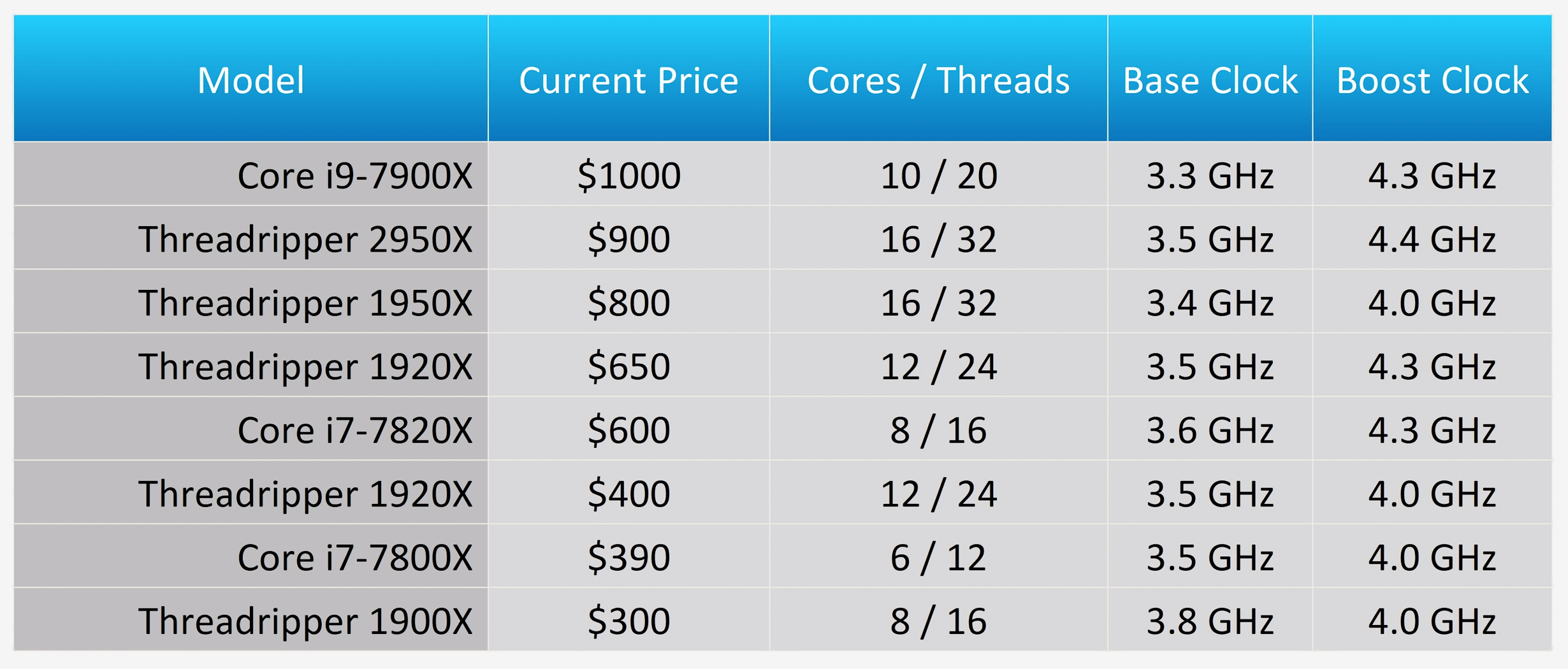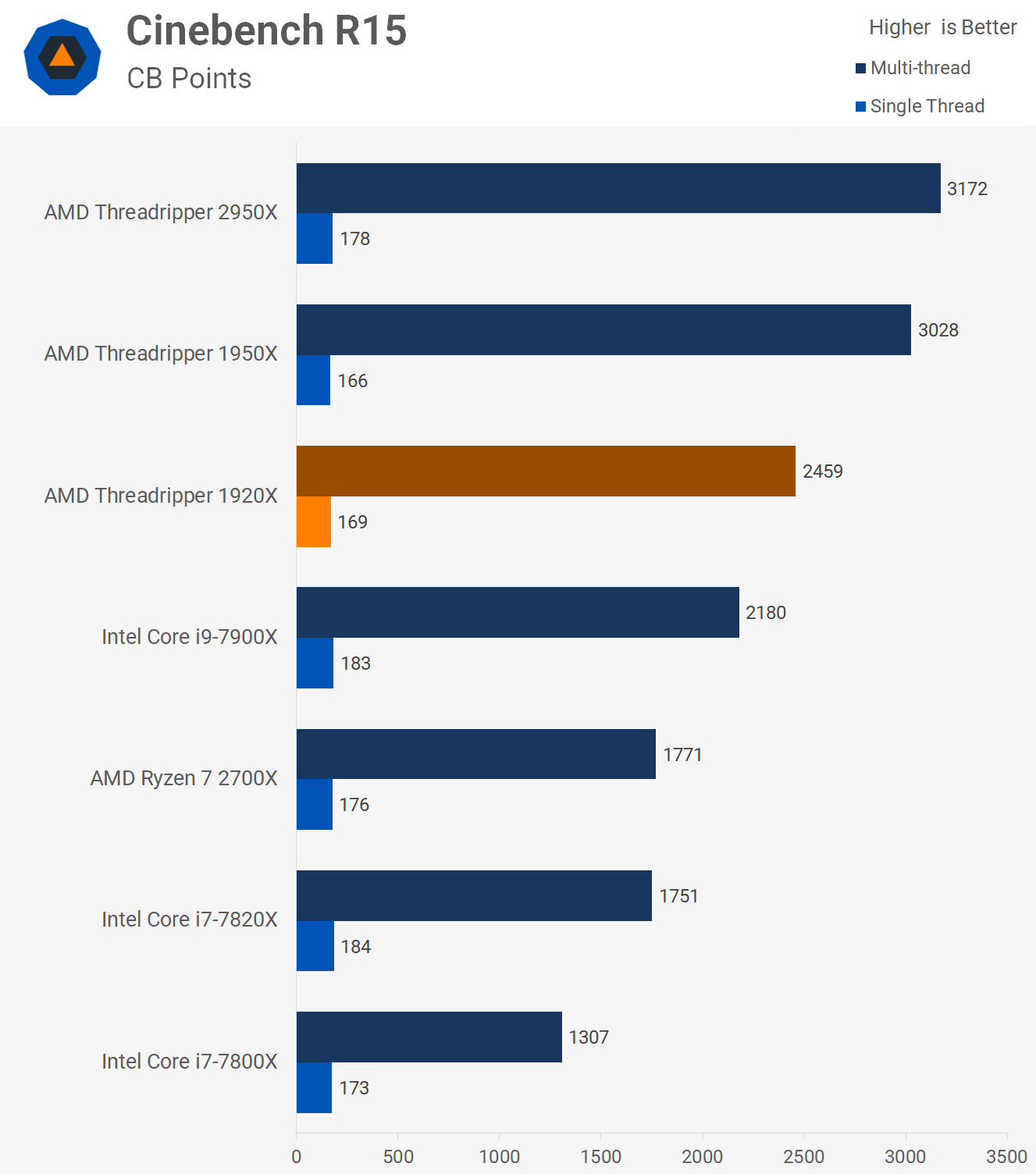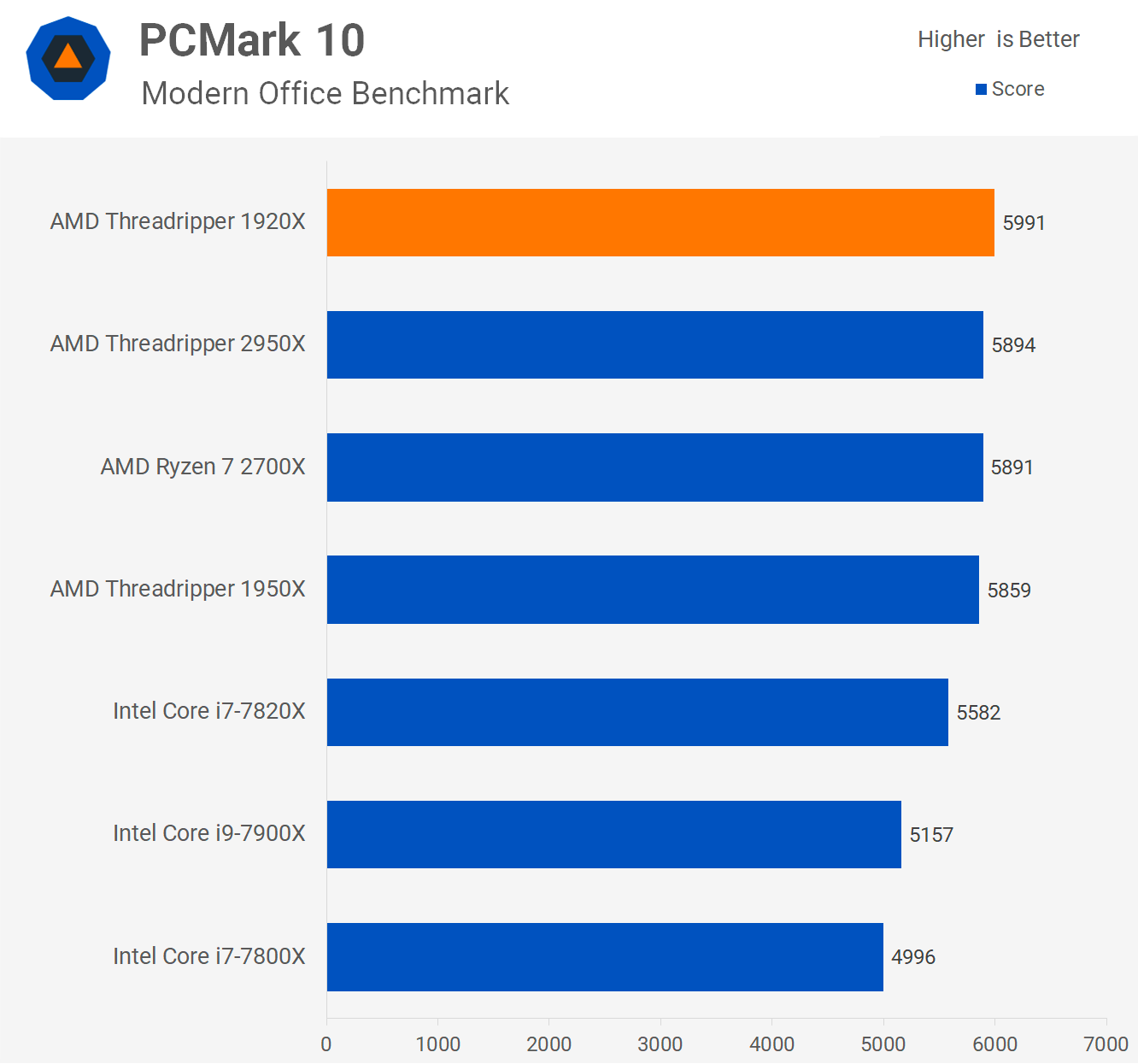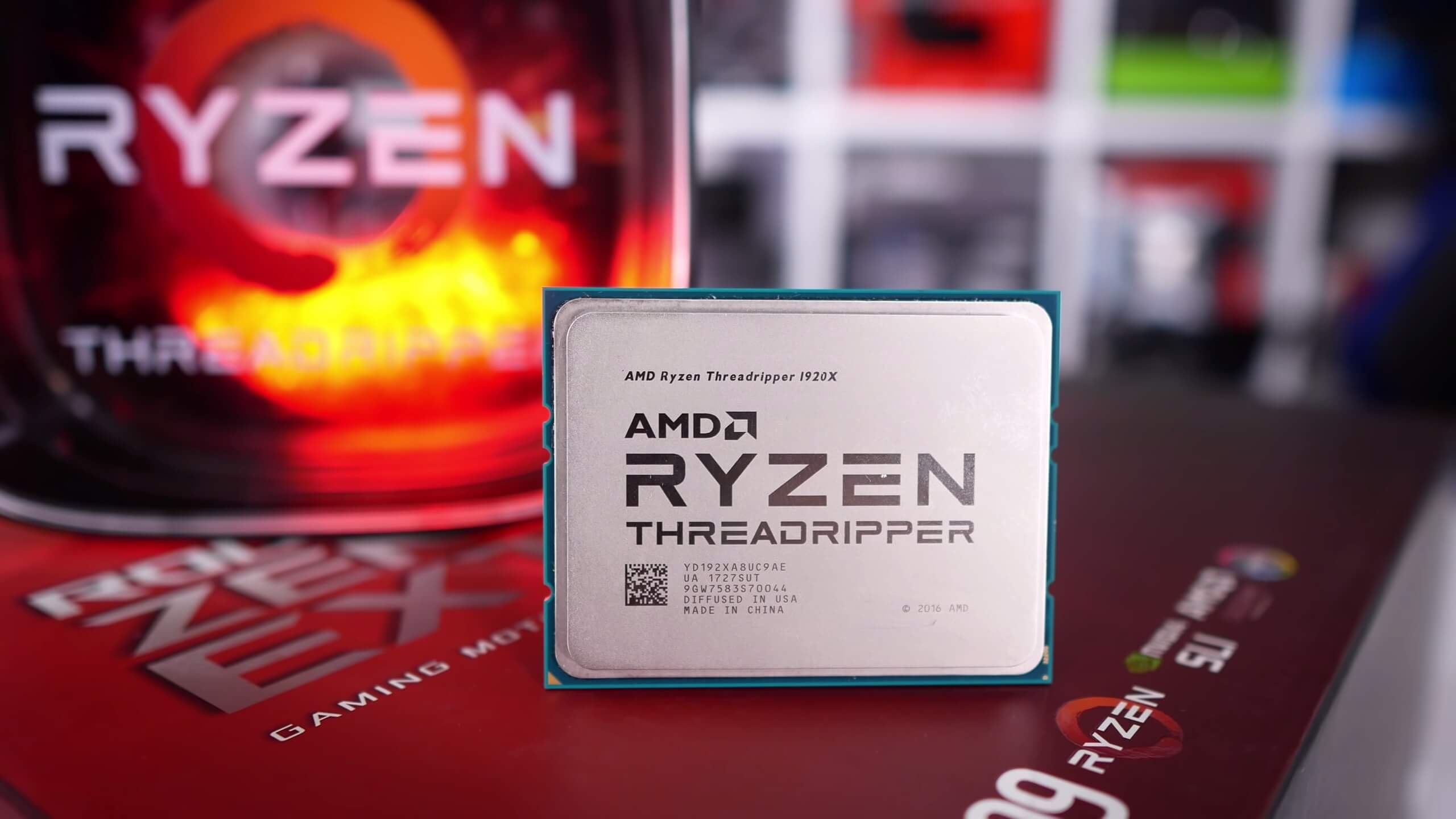With AMD's 2nd generation Threadripper out in the wild, the company has decided to slash prices of first gen parts. So far only the 32-core 2990WX and 16-core 2950X have been unleashed, while the 12 and 24-core versions will arrive in about two more months.
In the meantime, AMD quietly reduced the Threadripper 1920X's SEP, short for "Suggested E-tailer Price," down from its launch price of $800 to just $400. On paper, for $400 a 12-core/24-thread high-end desktop processor is an incredible buy. To help put this into perspective, you can expect to pay roughly the same amount for Intel's Core i7-7800X, which has half as many cores. Meanwhile, Intel's 10-core 7900X still costs $1000, so at least when compared to Intel high-end desktop offerings the 1920X is an insane bargain.

Be aware it's not yet clear if this sale will continue while stock remains or if AMD will revert back pricing. The information we have right now suggests that the sale will run until the end of August, though AMD may continue to offer retailers rebates so they can maintain the sale price until stock runs out.
Having that said, even at the new low price you're still paying a decent premium over more mainstream parts such as the 2700X. Granted the 1920X only costs 20% more at the new price and packs 50% more cores, but motherboard prices do inflate the platform cost quite considerably.
For example the 2700X with a high quality B450 motherboard such as the MSI Tomahawk version will set you back $430, meanwhile the 1920X with the cheapest X399 board will cost $700, so a little over 60% more expensive. Factoring in memory doesn't help much as you need a minimum of 4 sticks for the X399 platform, but that can also be viewed as a bonus, we'll discuss all this towards the end of the article once we've gone over the performance benefits.

Let's quickly jump into the benchmarks, and then work out who this affordable 12-core processor is for.
All testing was conducted on the MSI MEG X399 Creation using 32GB of G.Skill FlareX DDR4-3200 memory. The performance will be achievable on any and all X399 motherboards and for the 1920X we recommend budget boards from MSI, Asrock and Asus...
Benchmarks
As I said we'm just going to breeze through all the testing. As you can see for rendering tasks you're looking at around a 40% performance uplift with the 1920X over the 2700X and an incredible 90% boost over Intel similarly priced 7800X.


This time when testing with Blender we see a 35% performance boost from the 2700X and an 80% improvement from the 7800X.

The last rendering test, POVray, shows a massive 46% performance boost for the 1920X over the 2700X and then it decimated the 7800X by an incredible 78% margin. So if you do a lot of rendering the 1920X is an extreme bargain right now.

For general usage the 1920X still get it done and here it delivered the best result in the PCMark 10 modern office benchmark, beating the 7800X by a 20% margin.

For budding content creators the 1920X is again a great value option at the new $400 price point. For encoding work it was 9% faster than the 2700X and 43% faster than the 7800X.

Even for heavy editing tasks the 1920X does well, here it was 19% faster than the 2700X and 27% faster than the 7800X.

Then when it comes to gaming the 1920X is no slouch either, beating both the 2700X and 7800X in the core heavy Ashes of the Singularity, of course performance won't be as amazing in all games but if this is a sign of the future the 1920X should be a very solid gamer for many years to come.

Even under less optimal conditions the 1920X still does well and here we see it pushing well over 100 fps at all times.

Another example is F1 2017, again not earth shattering performance when compared to the competition but overall still impressive stuff and 144 Hz gamers will be satisfied.

Here is another CPU punishing title and the 1920X does well, edging out the 7800X and 2700X by a slim margin.

Another big advantage of the X399 platform and the quad-channel memory controller of the 1920X is the big memory bandwidth, and of course big memory capacity.

Another strength is power consumption, with the 1920X you can get away with a quality 650 watt power supply and still pair it with a high-end graphics card.
What to Buy?
There's a quick performance refresher, now let's analyse the deal...
It kind of goes without saying but we'll say it anyway: if you don't have use for a 12-core CPU and eight or less cores will easily get you by, then this deal isn't really of interest, just get a 2700X or perhaps even the 2600X, especially if you're just gaming.
However if you need as many cores as you can possibly afford, and $700ish dollars is all you have for the CPU and motherboard combo, then you simply can't do better than this.

On average you could say the 1920X and Core i9-7900X are comparable. Overclocked the Intel CPU might even win out, assuming you have a constant supply of dry ice. Anyway, it's a pointless comparison as the 7900X plus a basic motherboard costs around $1250, so almost 80% more.
So assuming your workload can utilize all 12-cores and you need to see it finished as soon as possible, then what the heck are you waiting for, we'd be snapping up a 1920X with an affordable X399 motherboard right now. There's no point waiting 6-8 weeks for the 2920X to land at $650. That's the MSRP and realistically it's only going to be a few percent better in terms of performance.
Also worth noting while you might be paying 2 or 3 times more for an X399 board over an X470 or B450 board, you do get considerably more motherboard for that money. Remember X399 boards are designed to support huge amounts of DDR4 memory with their 8 DIMM slots. You also get a staggering amount of PCI Express lanes and loads of other features like more USB 3 ports than you can shake a stick at.

